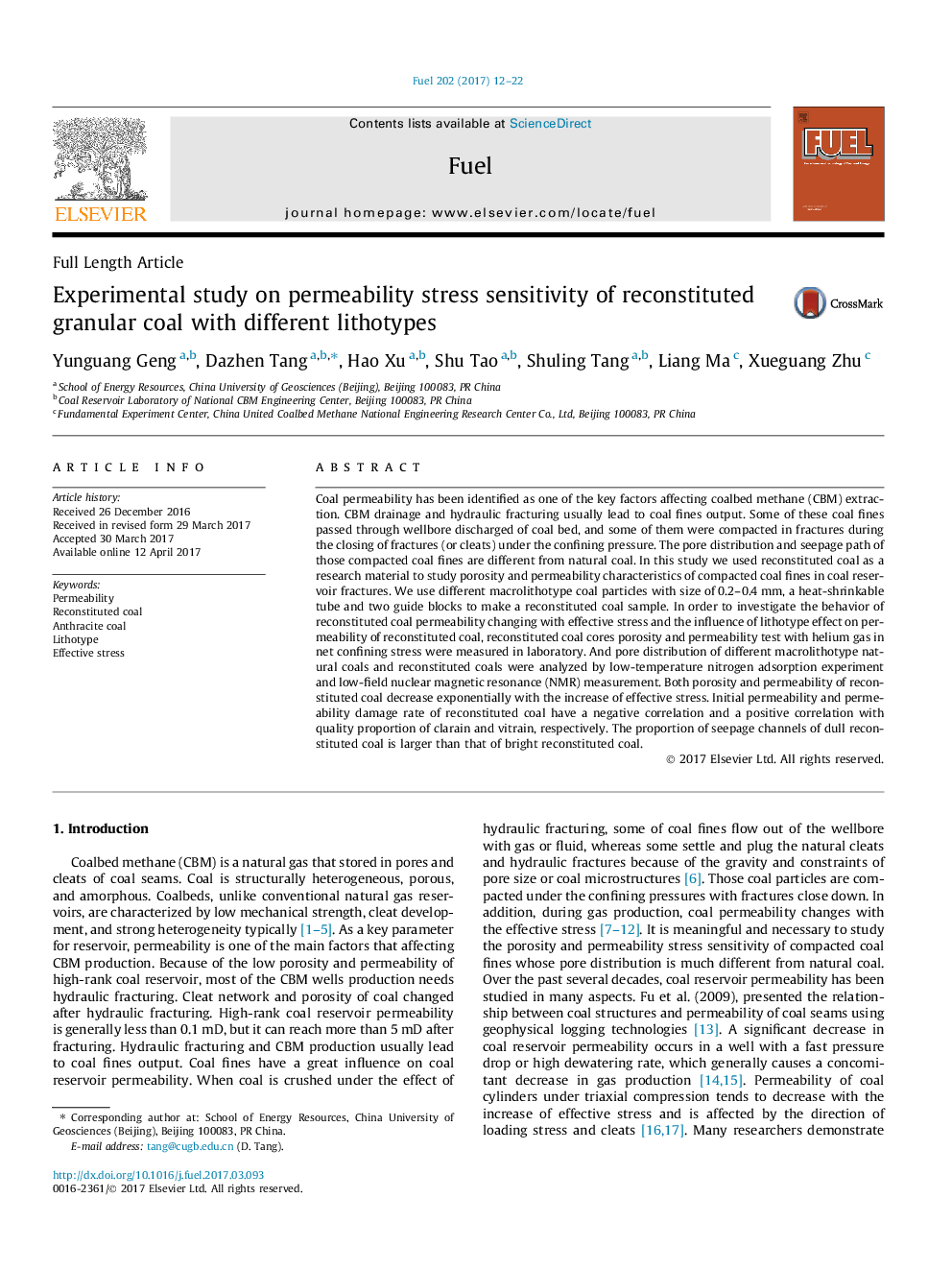| Article ID | Journal | Published Year | Pages | File Type |
|---|---|---|---|---|
| 6474521 | Fuel | 2017 | 11 Pages |
Coal permeability has been identified as one of the key factors affecting coalbed methane (CBM) extraction. CBM drainage and hydraulic fracturing usually lead to coal fines output. Some of these coal fines passed through wellbore discharged of coal bed, and some of them were compacted in fractures during the closing of fractures (or cleats) under the confining pressure. The pore distribution and seepage path of those compacted coal fines are different from natural coal. In this study we used reconstituted coal as a research material to study porosity and permeability characteristics of compacted coal fines in coal reservoir fractures. We use different macrolithotype coal particles with size of 0.2-0.4Â mm, a heat-shrinkable tube and two guide blocks to make a reconstituted coal sample. In order to investigate the behavior of reconstituted coal permeability changing with effective stress and the influence of lithotype effect on permeability of reconstituted coal, reconstituted coal cores porosity and permeability test with helium gas in net confining stress were measured in laboratory. And pore distribution of different macrolithotype natural coals and reconstituted coals were analyzed by low-temperature nitrogen adsorption experiment and low-field nuclear magnetic resonance (NMR) measurement. Both porosity and permeability of reconstituted coal decrease exponentially with the increase of effective stress. Initial permeability and permeability damage rate of reconstituted coal have a negative correlation and a positive correlation with quality proportion of clarain and vitrain, respectively. The proportion of seepage channels of dull reconstituted coal is larger than that of bright reconstituted coal.
